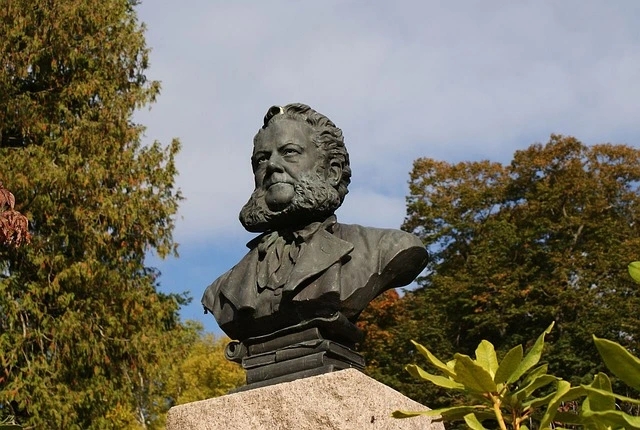Behaviourist theory of language learning is one of the oldest and most influential theories in linguistics and psychology. The behaviourist theory, also known as behavioral psychology, is based on the idea that language is a set of habits acquired through conditioning and reinforcement. According to this theory, language learning is a process of imitation, repetition, and reward and does not involve any innate or mental abilities.
The behaviourist theory was formally established by John B. Watson in 1913, who argued that psychology should only study observable and measurable behaviour, not internal mental states. Watson claimed that he could train any child to become a specialist, regardless of their talents or background, by controlling their environment and stimuli. Watson’s approach was influenced by the earlier work of Ivan Pavlov, who showed that dogs could learn to associate a neutral stimulus (such as a bell) with a reflexive response (such as salivation) through repeated pairing.
One of the leading proponents of the behaviourist language learning theory was B.F. Skinner applied Watson’s principles to human language. Skinner proposed that children learn language by imitating the sounds and patterns they hear in their environment and receiving positive reinforcement when they produce correct utterances. For example, when a child says “milk” and the mother smiles and gives her some, the child learns to associate the word with the meaning and the reward. Skinner also suggested that children learn to avoid incorrect utterances through negative reinforcement or punishment. For example, when a child says “milky” and the mother corrects her and says “milk,” the child learns to avoid the error.
You can read about Krashen’s Monitor Model in the following post:
Implications for Language Teaching and Learning
The behaviourist theory of language learning has several implications for language teaching and learning:
- It implies that language learning is a mechanical process that external factors can control and manipulate.
- Language learning is mainly based on memorizing and repeating forms and texts rather than on understanding and creativity.
- It implies that language learning is influenced more by rewards and punishments than by intrinsic motivation or interest.
To illustrate these implications, let us consider examples of how behaviourist theory can be applied to language teaching and learning. One example is the audio-lingual method, which was popular in the 1950s and 1960s. This method involved presenting learners with dialogues or sentences in the target language, which they had to repeat until they became fluent. The teacher would provide feedback and corrections to ensure accuracy. The learners were not expected to understand or analyze the language but to imitate and memorize it.
Another example is the use of drills and exercises, which are still widely used in many language classrooms today. These activities involve practicing specific language forms or structures through repetition and variation. For example, learners may be asked to fill in the blanks with the correct verb form or to change a sentence from active to passive voice. The teacher would provide reinforcement or correction depending on the learners’ performance. The learners were not expected to use or produce the language in meaningful contexts but to master its rules and patterns.
Criticism Against Behaviourist Theory
However, the behaviourist theory of language learning has also been criticized by many linguists and psychologists for its limitations and flaws. Some of the main criticisms are:
The behaviourist theory cannot account for the complexity and diversity of human language. Language is not just a set of habits or stimuli-responses but a system of rules and structures that can generate infinite sentences from a finite set of symbols. Language also has different levels of analysis, such as phonology, morphology, syntax, semantics, pragmatics, etc., that cannot be reduced to simple associations or reinforcements.
The behaviourist theory cannot explain how children acquire language so rapidly and effortlessly, despite the limited and imperfect input they receive from their environment. Children can produce novel and grammatical sentences they have never heard before and understand sentences that are ambiguous or incomplete. Children also show sensitivity to the grammar and meaning of language from an early age, even before they can speak.
The behaviourist theory cannot account for the role of innate or biological factors in language learning. Evidence shows that humans have a genetic predisposition for language acquisition, such as a specialized brain area (Broca’s area) and a critical period (a window during which language learning is optimal). There is also evidence that humans have a universal grammar (a set of innate principles and parameters that govern all languages), as proposed by Noam Chomsky.
The behaviourist theory cannot account for the role of cognitive or mental factors in language learning. Language learning is not just a matter of imitation or repetition but also involves processes such as attention, memory, inference, hypothesis testing, problem-solving, etc. Language learning also depends on factors that are not observable or measurable, such as motivation, attitude, emotion, personality, etc.
To illustrate these criticisms, let us consider examples of how the behaviourist theory fails to account for some aspects of language learning. One example is the phenomenon of overgeneralization, which occurs when children apply a grammatical rule to cases where it does not apply. For example, children may say “I goed” or “she runned” instead of “I went” or “she ran”. This shows that children are not just imitating or repeating what they hear but also forming and testing hypotheses about the language. It also shows that children are not influenced by negative reinforcement or correction, as they often persist in making these errors despite being exposed to the correct forms.
Other examples of overgeneralization are:
Children may say “foots” or “mouses” instead of “feet” or “mice”, applying the regular plural rule to irregular nouns.
Children may say, “he can sings” or “they is happy”, applying the third person singular rule or the singular verb form to inappropriate subjects.
Children may say, “she breaked the glass” or “he drawed a picture”, applying the regular past tense rule to irregular verbs.
Children may say “more faster” or “most big”, applying the comparative or superlative rule to adjectives that already have these forms.
Children may say, “I have two tooths” or “she has four feets”, applying the number agreement rule to words that have different forms in singular and plural.
These examples show that children are not simply copying the language they hear but are trying to discover its underlying patterns and rules. They also show that children are able to generalize from specific cases to new ones, which is a sign of creativity and intelligence.
Some other criticisms of the behaviourist theory of language learning are:
The behaviourist theory does not account for the social and cultural aspects of language learning. Language is not just a tool for communication but also a means of expressing identity, values, beliefs, emotions, etc. Language learning is influenced by the social and cultural context in which it occurs, such as the norms, expectations, roles, and relationships of the speakers and listeners.
The behaviourist theory does not account for language learners’ individual differences and preferences. Language learners have different abilities, styles, strategies, goals, interests, etc., that affect their language learning process and outcomes. Language learning is not a one-size-fits-all process but a personalized and adaptive one.
The behaviourist theory does not account for the transfer and interference of language learning. Language learners often have prior knowledge or experience of other languages, which can either facilitate or hinder their language learning. Language learning is not an isolated process but an interrelated and dynamic one.
In conclusion, the behaviourist theory of language learning is an influential but controversial theory that has contributed to our understanding of how humans learn languages. However, it has also been challenged by alternative theories that emphasize the complexity and diversity of human language and the role of innate or cognitive factors in language learning.





Leave a comment